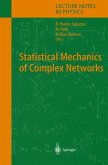Most networks and databases that humans have to deal with contain large, albeit finite number of units. Their structure, for maintaining functional consistency of the components, is essentially not random and calls for a precise quantitative description of relations between nodes (or data units) and all network components. This book is an introduction, for both graduate students and newcomers to the field, to the theory of graphs and random walks on such graphs. The methods based on random walks and diffusions for exploring the structure of finite connected graphs and databases are reviewed (Markov chain analysis). This provides the necessary basis for consistently discussing a number of applications such diverse as electric resistance networks, estimation of land prices, urban planning, linguistic databases, music, and gene expression regulatory networks.








